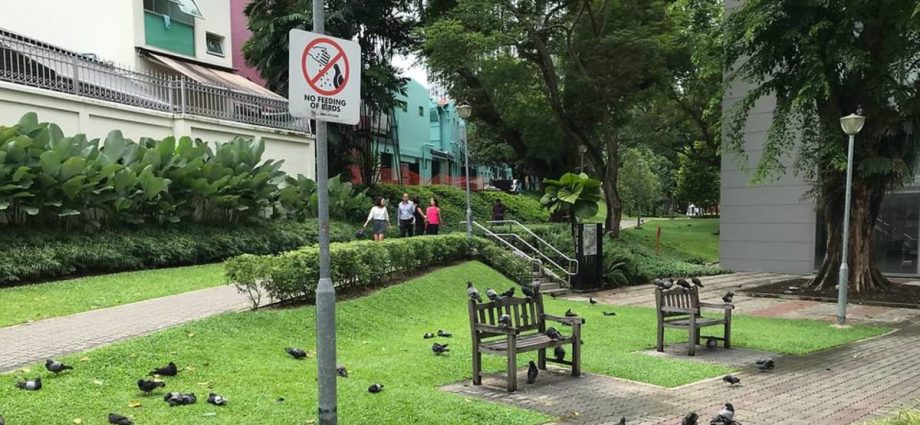
This was exemplified in the culling programme conducted in Basel, Switzerland, from 1961 to 1985. About 100,000 pigeons were culled through shooting and trapping during this period, yet the population remained stable.
Compare this with a different approach adopted in the same city in 1988 by an organisation called Pigeon Action, focused on public education campaigns, discouraging pigeon feeding, and implementing pigeon lofts to remove eggs. Within four years, the pigeon population was halved.
The case of Basel exemplifies how long-term strategies that emphasise public engagement and responsible behaviour can achieve significant reductions in pigeon populations without resorting to cruel and ineffective culling methods.
WELL-INTENTIONED FEEDERS, UNINTENDED HARM
In Singapore, two straightforward long-term solutions stand out: Stop feeding pigeons and avoid leaving food sources accessible to them.
In 2020, stricter penalties for feeding pigeons were introduced, with fines up to S$10,000. Despite this, the National Parks Board (NParks) took enforcement actions in more than 200 cases of pigeon feeding from Jun 1, 2020 to Jun 28, 2023.
Feeding pigeons has become somewhat ingrained among some residents, with a particular prevalence among our seniors. Some individuals may still be unaware of the negative associated consequences, while others see feeding birds as an act of kindness towards animals that brings joy, a sense of purpose, or even a sort of companionship if they experience isolation and loneliness.
Efforts have been made by grassroots organisations and non-profit organisations like the Animal Concerns Research and Education Society (ACRES) in engaging senior feeders in other fulfilling activities. NParks also works with partners to engage pigeon feeders to understand why they do so and what might make them stop.

